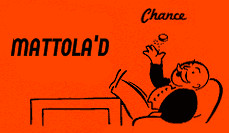- Thread starter
- #1
BGDave
Grumpy Old Man
For an interesting take on hockey free agency the past 10 years, take a look at
NHL Free Agency: A Decade of Decisions «
Basically, one writer's opinion on the best and worst signings over the last decade.
And for the Leaf bashers, there is plenty here to keep you entertained
What I found most interesting is the AAVs that were thrown around every year, even back in 2005 and 2006. Comparing that to todays market, the overall pay structure has not changed a lot in 10 years
NHL Free Agency: A Decade of Decisions «
Basically, one writer's opinion on the best and worst signings over the last decade.
And for the Leaf bashers, there is plenty here to keep you entertained

What I found most interesting is the AAVs that were thrown around every year, even back in 2005 and 2006. Comparing that to todays market, the overall pay structure has not changed a lot in 10 years













